Historical Slovakia Cities and Towns
Western Slovakia
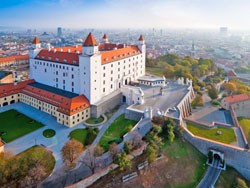 BRATISLAVA
BRATISLAVA
Bratislava is the capital of Slovakia and the country's largest city. It is located on both banks of the Danube River. Bordering Austria and Hungary, it is the only national capital that borders two countries. Bratislava is the political, cultural and economic centre of Slovakia. It is the seat of the Slovak president, the parliament, and the executive branch of the government. The history of the city, long known by the German name Pressburg, has been strongly influenced by various peoples, including Austrians, Czechs, Germans, Hungarians, Jews and Slovaks. The city was the capital of the Kingdom of Hungary under the Habsburg monarchy from 1536 to 1783. Bratislava was home to the Slovak national movement of the 19th century and to many Slovak, Hungarian and German historical figures.
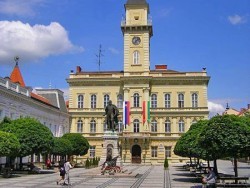 KOMÁRNO
KOMÁRNO
Komárno was established in the early Middle Ages and is one of the oldest towns in Slovakia. It has a rich history, cultural traditions and important cultural monuments. Urban development in the distant past was predestined by his significant location and strategic role of the guardian castle. The region of Komarno lies on the left bank of the Danube River, at the eastern tip of Rye Island, in the lower reaches of the Little Danube, Nitra and Zittau. It is not only the southernmost, but also the lowest point in the Slovak Republic.
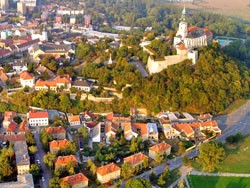 NITRA
NITRA
Nitra is the county seat located about 80 km northeast of Bratislava. The river Nitra flows through the town and from the north side the hill Zobor rises above it. Together with Trnava it is one of the oldest cities in Slovakia, the first confirmed historical references dating back to the beginning of the 9th century. By the populations it is the fifth largest city in Slovakia. Nitra is a city of extraordinary historical significance. The origins of the settlement go back to prehistoric times, as documented by numerous archaeological finds in the city. Already 30 000 years ago was a densely populated area. First peasant settlements were on the territory of the town some 6,000 years ago.
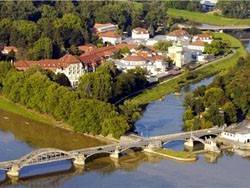 PIEŠŤANY
PIEŠŤANY
The world famous spa town of Piestany is situated in the western part of Slovakia in Trnava region, in the valley of the lower reaches of the longest Slovak river Vah. Its area of 4 420 ha lies under the western slopes Považský Inovec at an altitude of 162 m. The city is the seat of district Piestany, which consists of 27 municipalities. Settlement of today's spa town and its surroundings dates back to prehistoric times when near hot thermal springs mammoth hunters settled, as confirmed by the archaeological find Moravian Venus - Sculpture woman carved from mammoth tusk from the younger period of the early Stone Age.
 TRENČÍN
TRENČÍN
Trenčín is the county seat lying on the river Vah. It is situated in western Slovakia near the Czech border. The city is located approximately 120 km northeast of the capital of Slovakia - Bratislava. Its strategical position gave rise Trencin Castle. Even now, Trenčín is an important center of trade, economy, culture and sports. Many institutions and companies have their headquarters and branches in the town. Exhibitions and fairs have a long tradition in Trenčín which is also known as a city of fashion.
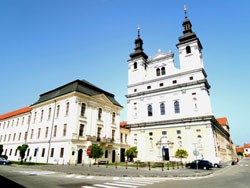 TRNAVA
TRNAVA
Trnava is the fifth largest city in Slovakia and one of the county seats. Thanks to its many churches it is called as the Small Rome. It is located 45 km northeast of Bratislava, in the Trnava valley, between the Little Carpathians and the valley of river Váh. Even before the Celts and Romans the town of Trnava was an important center and crossroads of trade routes. It was the first town in the area of present-day Slovakia, which was given the privilege of a free royal city, which the Hungarian King Bela IV gave the city in the year 1238.
Middle Slovakia
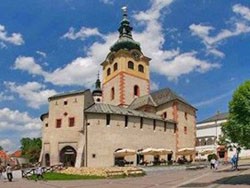 BANSKÁ BYSTRICA
BANSKÁ BYSTRICA
Banská Bystrica - the heart of Slovakia - lies in Zvolen basin, in the valley of the river Hron between the Kremnica and Starohorské Mountains and Polana. The city's history began in the 13th century. Banská Bystrica was one of the first towns in Slovakia declared an urban conservation area. The most valuable sights include the town castle (Barbican), the square with Church of Our Lady and St. Cross, Old Town Hall, the Mathias house, barbican and remnants of town fortifications. The heart of town is the large rectangular square of the Slovak National Uprising with Marian column and leaning clock tower.
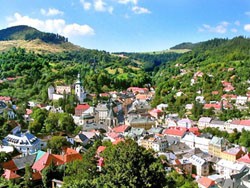 BANSKÁ ŠTIAVNICA
BANSKÁ ŠTIAVNICA
Banská Štiavnica is the oldest mining town in Slovakia. It has a dominant status in Europe at the beginning of the 13th century and has become one of the most important mining centers of gold and silver, while the most important center of mining science, technology and education. Rapid flourishing and fame of the free royal city directly related to its rich ore veins. Direct evidence of the importance of the city is not only a considerable area already in the Roman period as well as its architecture. Representative town center, which was finally formed during the 16th century, is characterized in addition to large Gothic and Renaissance burgher houses by the town hall and the St. Catherine church.
Eastern Slovakia
 KOŠICE
KOŠICE
The city of Košice, the second largest city of Slovakia, is located in the eastern part of the republic, near the border with Hungary (20 km), Ukraine (80 km) and Poland (90 km). Convenient location in the past makes the Košice an important point on trade routes. Nowadays it is a key economic agglomeration but also a crossroads of transport routes, to which the railway junction and international airport contribute. Kosice is the first European city, which received its own armorial list. The monarch Louis the Great gave it to the town of Košice in 1369.
 BARDEJOV
BARDEJOV
Bardejov - the first written mention of it is from the 13th century. The highlight of the economic development of the city was in the 15th century, when townspeople grew rich mainly by the production of canvas. The city with adjoining spas had mills, a brewery, brickworks, slaughterhouses, urban scale and was the center of trade and crafts. Longitudinal Central Square is the most important part of the town. It contains major urban architectural, artistic and historical and cultural structures and values. The most important monuments include the Gothic Church of St. Egidius from the 14th century, the former town hall from 1511, Gothic town houses, Franciscan Church, Greek-Catholic church, town fortifications and a set of former Jewish baths, a synagogue, economic and residential buildings.









